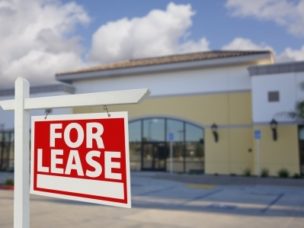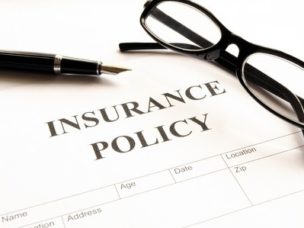Stay in the know
Subscribe to the Real Estate Blog and we’ll send you an email each time something new is posted.
Subscribe to the Real Estate Blog and we’ll send you an email each time something new is posted.
Blogs
Real Estate Blog
Due Diligence – What commercial real estate lenders need to know when reviewing leases that affect their collateral
While larger lending institutions may have experience with sophisticated commercial real estate loan transactions, community or regional lenders often do not and may not be aware of the many pitfalls that can arise from commercial leases which often form a significant portion of a lender’s collateral package.
Care, therefore, is needed when reviewing commercial leases. Below is a brief summary of some frequently found provisions in commercial leases that require a lender’s close scrutiny.
- Termination Rights. An obvious concern is the effect a tenant’s termination rights may have on a borrower’s ability to meet debt service obligations. An early termination of a lease can bring the unpleasant surprise of a monetary default under the loan. A tenant’s termination rights could emanate from several sources: a landlord could breach a restrictive use covenant; not complete leasehold improvements timely; not make major repairs; or not restore the demised premises soon enough after a casualty.
- Going Dark. What are landlord’s rights if a tenant closes its doors and ceases operations? A tenant “going dark” may have nothing to do with actions or omissions of the landlord. Although the tenant typically has the obligation to continue paying rent, its collectability may be in doubt. The lender also needs to think about the potential impact a “going dark” clause may have on other tenants in a multi-tenanted retail center should a tenant exercise that right in the lease. That tenant may be the anchor in the center and the other tenants may rely heavily on the continuing generation of this tenant so as to generate traffic and business. In all commercial mortgage loans that have significant retail leases, the lender should visualize itself as the potential landlord should it need to step into the shoes of the landlord upon default. The lender as landlord will want sufficient time to cure landlord defaults to preserve leases. Because a lease may not give the lender sufficient comfort to cure its borrower’s lease defaults, SNDAs (Subordination, Non-Disturbance and Attornment Agreements) will frequently contain provisions extending cure periods to accommodate the lender.
- Set-Off and Rent Abatement. Commercial leases will often contain a provision allowing a tenant to stop paying a portion or all of the rent, for a certain period of time that the landlord is not meeting its obligations under the lease. If some sort of setoff or rent abatement is unavoidable in a lease under negotiation because of the negotiating leverage of the tenant, the lenders should insist that the amount of the “set-off” or “rent abatement” never exceeds what is necessary to fully service the debt, and to pay real estate taxes and insurance. This can be addressed by setting caps on the amount of rent that can be set-off or abated in any given payment period.
- Landlord Obligation to Rebuild or Restore. The obligation to rebuild or restore improvements after a casualty frequently falls on the shoulders of the landlord. This can be a very costly undertaking for landlords, particularly if insurance coverage is inadequate. Lenders should include in the SNDA that it does not assume the landlord’s obligation to restore should it take possession after a loan default. But if the lender does not rebuild, the tenant will insist on a termination right. In all cases, the lender needs to monitor the restoration process closely to help maintain the economic viability of the property so that it continues to have the capacity to service the lender’s debt service.
- Subordination, Non-disturbance and Attornment Agreements (SNDAs). The role of the SNDA in a loan transaction is to subordinate a lease to the lender’s security interest in a property. This subordination is usually given by tenants in exchange for a promise by the lender not to disturb the leasehold rights of the tenant in the event of foreclosure provided the tenant is not in default of its lease. However, a key provision for lenders in the SNDA is “attornment”. The attornment provision provides that in the case of a foreclosure, the tenant will attorn to (or recognize) the lender (or the buyer at a foreclosure sale) as the new landlord under the lease with all the same rights of the prior landlord. A new lender will want to be sure that any tenant that has an interest in the property that is prior to the mortgage is obligated in its lease to provide an SNDA in connection with a new mortgage.
- Rights of First Refusal, First Offer or First Negotiation. These tenant rights can limit a landlord’s ability to lease vacant space when a tenant possesses these rights. In multi-tenant buildings, tenants who hold these rights may be entitled to notice when other spaces in the building become available, and landlords may not be able to offer vacant spaces to desirable tenants without first offering it to existing tenants who hold these rights. These rights can significantly burden a landlord’s ability to market its building and as a result, negatively impact the long term economic viability of the lender’s collateral.
- Single Tenant vs. Multi-Tenant Many issues described in this post (and others) will have far less adverse impact if they arise in only one lease in a large multi-tenanted building. In the case of a single tenant property, however, these issues magnify the impact to the lender since the source of repayment is concentrated in one lease.
- Estoppel Certificates Many leases provide that either party will execute an estoppel certificate upon request of the other. The estoppel gives a lender notice of existing issues in the landlord/tenant relationship and any defaults by either party that might need to be cured. A lender should confirm whether the leases require tenants to provide estoppel certificates. The lender should review the estoppel certificate to be sure there are no unexpected issues with the property or the relationship between landlord and tenant that would prove costly to resolve by the landlord, or later by the lender if a foreclosure becomes necessary.
The list above is meant to highlight just a few of the commercial lease provisions that lenders should look for when reviewing leases that will collateralize a mortgage loan.



